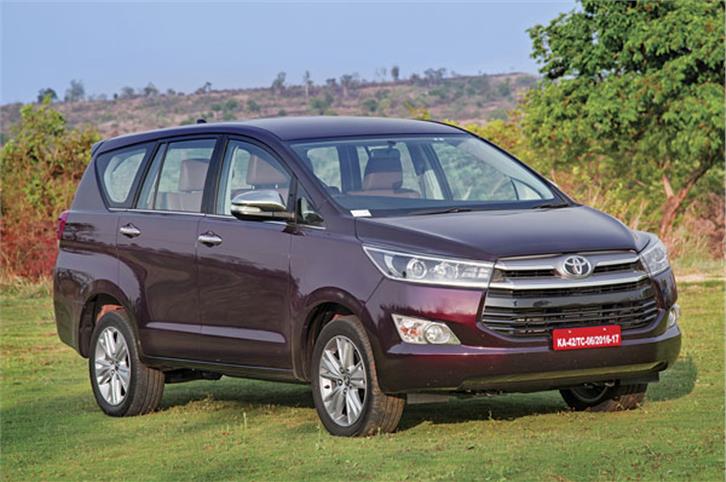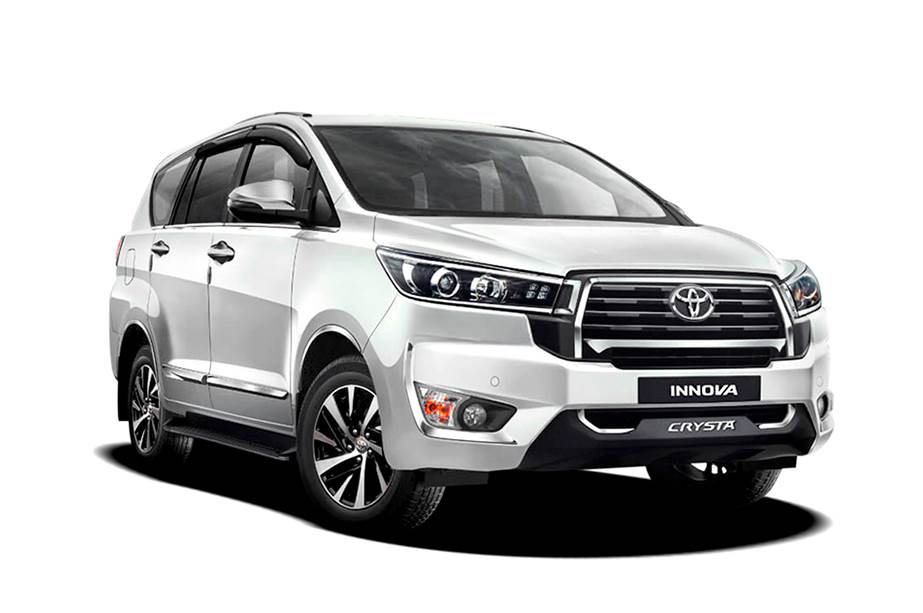Toyota Innova Crysta review, road test
After 11 years, Toyota has finally launched the all-new Innova and taken it even more upmarket. We find out if it’s worth the extra premium.
Published on Jun 27, 2016 02:53:00 PM
3,30,694 Views
Follow us on

The Crysta comes 11 years after the original Innova.

Feels as heavy as a tank, but is equally solid and reliable.

The biggest improvement to the new Innova is under the hood. Out goes the ageing 102hp 2.5-litre diesel and in comes two powerful state-of-the-art diesels – a 150hp, 2.4 and a 174hp, 2.8-litre unit from Toyota’s new GD engine family. Both these four-cylinder engines are twin cam, 16-valve units with small capacity, fast-response turbos and timing chains that don’t need replacement for the life of the engine. The smaller engine is mated to a five-speed manual while the larger 2.8-litre unit is only sold with a six-speed automatic. What’s new on both the engines are three driving modes —Eco, Normal and Power, which alter engine fuelling and in Eco mode, also the air-con performance. Unlike some other engines that also lower the rev limit in economy mode, the Innova engines are allowed to spin all the way to the redline but in a more slow and relaxed manner.
The old Innova engine was known for its responsiveness from low revs and was quite drivable, thanks largely to its short gearing. However, it lacked top-end performance (it lumbered to 100kph in a lazy 17.5 seconds from standstill) and it wasn’t a relaxed cruiser either. At 120kph low gearing made the engine turn over at a buzzy 3,400rpm in fifth gear and this impacted fuel efficiency too.
The new 2.4-litre unit, on the other hand, is far peppier with a 0-100kph time of 13.11 seconds (in Power mode) and while the lack of a six-speed gearbox is felt on long highway runs, the taller ratios mean the engine is now spinning at a far lower 2,900 rpm at 120kph. Performance is quite strong in the bottom and mid range and the broad spread of torque makes overtaking far more relaxed and effortless. It’s not as responsive off the line as the earlier car and there’s a bit more turbo lag, but that’s only until about 1600 rpm after which, the power delivery is quite linear. The gear lever is now shorter but the shifting effort is too high and the clutch pedal too hard for a comfortable drive in dense traffic. And it is in these conditions that the 2.8-litre engine with the automatic gearbox is the far better option.
Performance too, from the bigger engine, is at a different level. The 0-100kph dash is covered in a very fast 11.46 seconds, putting it in executive sedan territory; this, despite the MPV weighing nearly 1.9 tonnes. In Power mode, you can even do long, rear-wheel burnouts! The auto gearbox has a fairly quick shift for a conventional torque convertor unit but you do get a bit of delay in response when you mash the throttle pedal from low revs. In Normal mode, it has a tendency to shift up earlier than you’d like, which is why we preferred keeping it in Sport where it hangs on to each ratio longer. There are no paddle shifters but there is a manual tip control.
The gearbox also has a Normal and Sport shift option. What’s interesting is that you can mix and match the gearbox and engine to any of the modes. So, you can have the engine in Eco with the gearbox in Sport, or the engine in Power with the gearbox in Normal, which is a good way of enjoying a slightly engaging drive with the engine providing ample power and the gearbox not letting the revs climb too high, which brings out the engine’s only drawback – the high noise levels. At higher revs, the noise is fairly intrusive. This is also true of the smaller engine.
Coming to the various driving modes, Sport is undoubtedly the most entertaining and in this setting, the engine is the most responsive and delivers a lusty slug of torque, noticeably more than in the other modes. In fact, for everyday driving, using Sport mode can be a challenge, as you need to temper the way the Crysta surges forward when the engine is in the meat of the powerband. Moving from Normal to Eco dulls the throttle response with power delivery getting progressively flatter, but even in Eco, the Crysta doesn’t feel underpowered, especially the 2.8.
Copyright (c) Autocar India. All rights reserved.



Comments
Member Login
Personal Details
No comments yet. Be the first to comment.